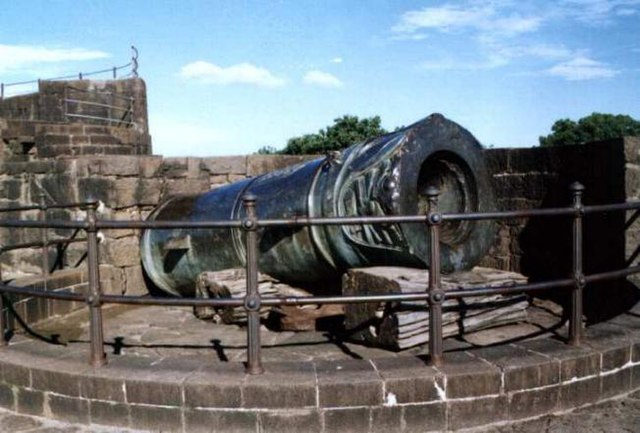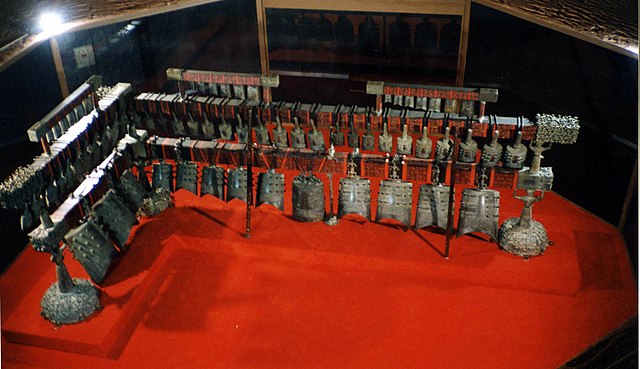Bell metal or bell bronze is an alloy used for making bells and related instruments, such as cymbals. It is a form of bronze with a higher tin content than most other bronzes, usually in approximately a 4:1 ratio of copper to tin. The higher tin content increases the rigidity of the metal, and increases the resonance. Historically, it was preferred for early cannons. Today, it also has industrial uses, being specified for valve bodies, piston rings, bearings, and bushings.
Cannon made of bell metal at Malik-e-Maidan, Bijapur, India.
The Jingyun bell, cast in 711, weighing 6,500 kg, originally from the bell tower at the Tang dynasty capital Chang'an
A bell is a directly struck idiophone percussion instrument. Most bells have the shape of a hollow cup that when struck vibrates in a single strong strike tone, with its sides forming an efficient resonator. The strike may be made by an internal "clapper" or "uvula", an external hammer, or—in small bells—by a small loose sphere enclosed within the body of the bell.
13th c. BC bell, Shang dynasty
Chinese bronze bell, 18th-16th century BC
Bianzhong of Marquis Yi of Zeng, dated 433 BC.
English full-circle bells shown in the "down" position, in which they are normally left between ringing sessions.






